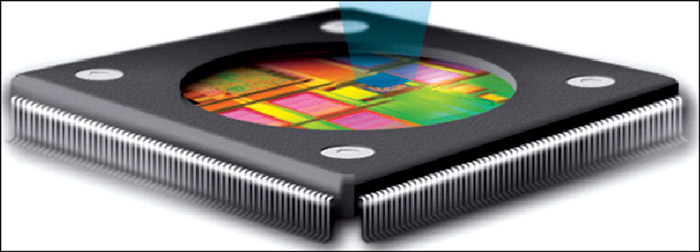Energy efficiency is the need of the hour and low-power-consuming microcontrollers (MCUs) are the foundation for efficient devices. The number of embedded devices running on battery power, or in other words parasitic power, continues to grow. Today, the design portability equates product profitability and low power is one of the main requirements of any design.
IoT driving power-efficient MCUs
Power-efficient MCUs are the rage these days and the Internet of Things (IoT) is what is driving them. For example, the 32-bit ARM Cortex-M0+ based Freedom Platform of MCUs is one such family of MCUs drawing currents near single-digit micro-ampere levels. Guru Ganesan, managing director, ARM India, says, “The ARM Cortex-M0+ processor behind this Freedom family of MCUs has been engineered with a two-stage pipeline for a power-efficient operation, specifically keeping IoT in mind.”
Designers are constantly demanding MCUs which use less power and have the capacity to support multiple actions simultaneously. The power-efficient MCU gives a designer an edge to work over various embedded applications and get a wide range of advantages like low-power libraries, gate level optimisation and power gating. Sanjay Gupta, R&D director, Automotive & Industrial MCU Group, India Design Center, Freescale Semiconductor India Pvt Ltd, says, “Performance-per-watt levels have evolved in many embedded applications to enable power-efficient designs, which help the end user to conserve energy.” He adds, “In fact, considering the looming power crisis, regulatory authorities have made it mandatory for consumer appliance companies to upgrade their products and display the energy-efficiency ratings, enabling the consumer to make smart choices.”

32-bit ARM Cortex-M0+ based Freedom Platform of MCUs
Low-power-consuming MCUs are certainly new to the market and a lot of innovation is being done in this space to support and help the engineers to develop smarter products and solutions.
Latest functionalities in MCUs
Today, most of the MCUs not only have tiny form factors and in-built wireless capabilities, their development boards also support ZigBee, Bluetooth or Wi-Fi capabilities—all capable of sitting on your fingertip. Ganesan says, “For example, the ARM Cortex-M0 based nRF51822-mkit from Nordic Semiconductor has a Bluetooth Low Energy (BLE 4.0) on the same chip on which the ARM Cortex-M0 sits.” Some other examples of development boards with such ARM based MCUs are MetaWear from Mbient Lab Inc. and RFDuino from RFDuino.com.
He adds, “Because of the tiny MCU form factors, these development boards are in turn tiny as well. Yet another similar platform is the ARM Cortex-M3 based spark core with an on-board Wi-Fi unit.” MCUs are additionally being enhanced with high-end digital signal processing (DSP) capabilities to handle image-processing, voice and similar other signal processing requirements as well. Cortex-M7 is an example.
Freescale’s low-power MCU portfolio extends from ultra-low-cost, small-footprint eight-bit MCUs with one kilobyte (kB) of Flash to high-performance 32-bit MCUs with up to 128kB of Flash. Gupta informs, “Low-power features include clock gating, multiple low-power operating modes and a 32kHz oscillator that consumes less than one micro-ampere.”
Texas Instruments’ (TI) CC430 family is another example of a wireless MCU that provides tight integration between the MCU core, peripherals, software and a sub-GHz radio frequency transceiver. TI’s CC2541 is another power-optimised wireless MCU example, which enables BLE and proprietary 2.4GHz network nodes to be built with low total bill of material costs.
MCUs with growing interfaces
MCUs today have a lot of interfaces that enable hooking up various kinds of sensors and actuators. The interfaces include general-purpose input/output (GPIO), analogue in, analogue out, pulse width modulation (PWM), universal serial bus (USB) host and device, inter-integrated circuit (I2C), serial peripheral interface (SPI), universal asynchronous receiver/transmitter (UART), RS232, built-in analogue-to-digital converter (ADC) and built-in digital-to-analogue converter (DAC), to name a few. These interfaces, along with currents in the near single-digit micro-amperes, make MCUs even more ideal for IoT. Ganesan says, “There is a lot of developer as well as application migration from eight and 16-bit MCUs to 32-bit ones today.” He explains, “The chief reason being that typical modern-day or IoT type of applications require more memory (determined by the address bus size), as well as larger data buses, for quicker and more efficient operation from a lay-person’s standpoint.”

A traditional Ethernet-enabled system (a) is built around an external PHY [physical layer of the open systems interconnection (OSI) model] requiring numerous passives and other components. When the Ethernet PHY is integrated into the MCU (b), board space requirements drop substantially, as do power consumption and system cost
MCUs also offer high-resolution ADC to 24-bit sigma delta ADC, high-resolution DAC, real-time clock (RTC) and liquid crystal display (LCD) controllers. Some companies also offer real-time operating system (OS) free with 32-bit MCUs.








